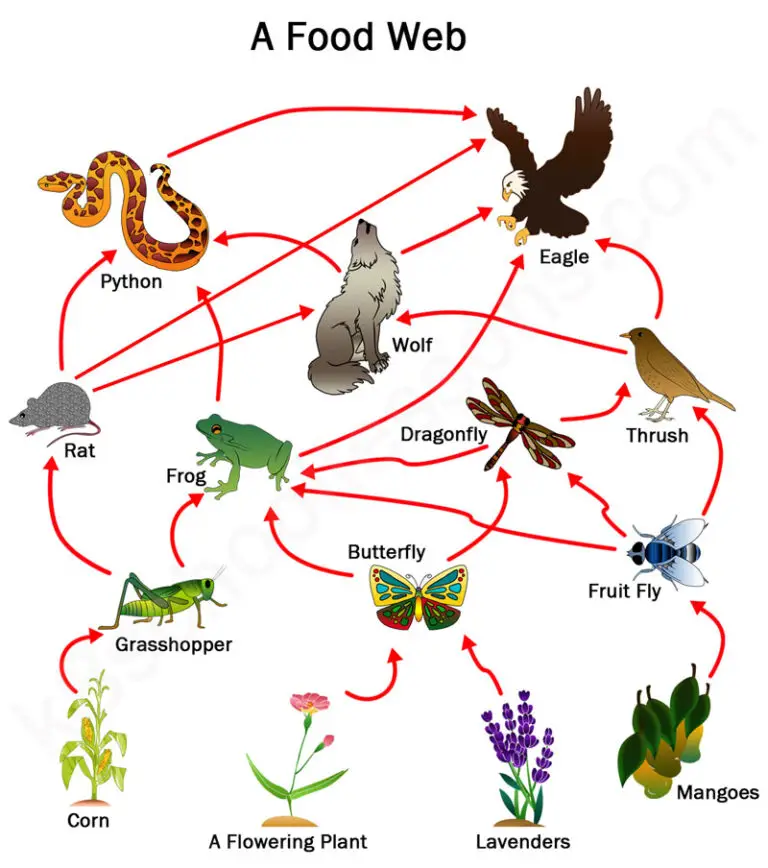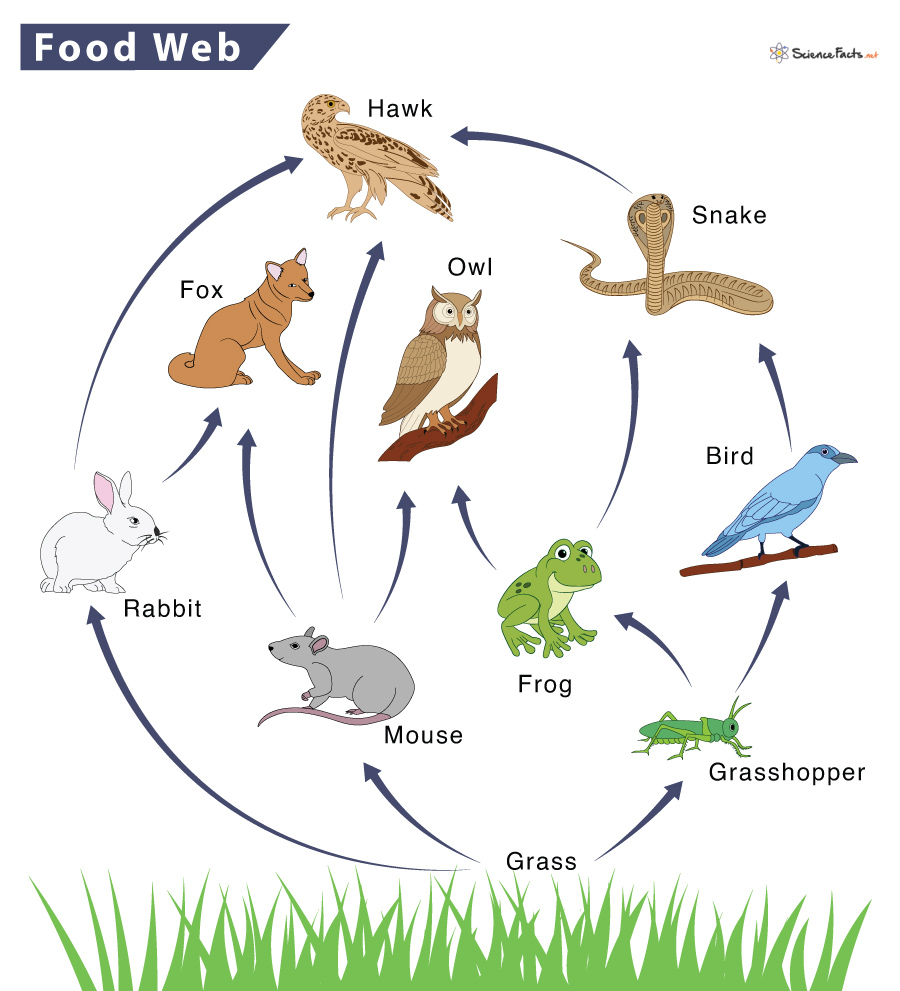Imagine a bustling marketplace bursting with activity. This isn’t your typical grocery store, but rather the grandest market imaginable – the living world itself. In this marketplace, every organism, from the tiniest microbe to the largest whale, plays a crucial role. They’re all connected, linked in an elaborate network of relationships known as food chains and food webs. These intricate systems reveal the delicate balance of nature, reminding us that what we eat, and what eats us, is all part of a fascinating story.

Image: microbiologynote.com
We’re all familiar with the basic idea of a food chain – a linear sequence of organisms where each one consumes the one before it. But in reality, the world is much more complex. Food webs, as the name suggests, are intricate interconnected networks, offering a more realistic depiction of how energy and nutrients flow through our planet. Today, we embark on a journey to explore these captivating systems, understanding how they function and why they are so vital.
The Big Picture: Understanding the Flow of Energy
The foundation of every food web rests on the producers – plants and algae. These photosynthetic marvels convert sunlight into energy, creating the fuel upon which all other life forms depend. Next comes the consumers, who rely on these producers for their sustenance. Herbivores, like deer or rabbits, nibble on green plants, while carnivores, such as wolves or lions, feed on other animals. Lastly, we have the decomposers, like fungi and bacteria, who break down dead organisms, returning essential nutrients back into the environment to fuel the cycle anew.
Untangling the Knot: Food Webs Demystified
Every organism in a food web plays a significant role, and their interactions are complex and dynamic. Consider the seemingly simple act of a bird eating a seed. This action connects the bird to the plant, and potentially to the insects that pollinated the plant. And if the bird is eaten by a snake, the snake joins the network, influencing the population dynamics of both birds and insects.
This intricate web of connections can be visualized like a map, where each node represents a species, and the lines connecting them signify predator-prey relationships. The web’s complexity varies across ecosystems, with diverse environments exhibiting more intricate connections.
The Importance of Diversity: A Stronger Web
Imagine a food web as a mighty castle, each species representing a strong brick. The more diverse the species within the web, the more resilient the castle becomes. A diverse web with multiple connections offers greater stability, buffering against the impacts of environmental change or disease outbreaks.
For example, if one species within a diverse web declines, other species can step in to fill the void, maintaining the balance. However, in a simplified web with limited connections, the loss of a single species can have devastating and cascading effects, potentially leading to ecological collapse.

Image: www.sciencefacts.net
A Case for Conservation: Preserving the Web of Life
Human actions significantly impact food webs across the globe. Habitat loss, pollution, and overfishing can disrupt these delicate systems, leading to detrimental consequences. The decline of a keystone species, a species with a disproportionate impact on the ecosystem, can have ripple effects throughout the entire web.
Understanding the interconnectedness of life is paramount for responsible environmental stewardship. By protecting biodiversity and striving towards sustainable practices, we can ensure the health and resilience of our planet’s food webs.
Balancing the Scales: Human Impacts on Food Chains
Humans, as apex predators, have a profound impact on food webs. We’ve cultivated vast landscapes for agriculture, altering natural habitats and introducing invasive species. Our fishing practices deplete fish stocks, disrupting marine ecosystems. And our consumption of meat, especially red meat, has implications for global food production, land use, and climate change.
Thinking Beyond Your Plate: Sustainable Food Choices
What’s for dinner tonight? The choice we make at mealtime has far-reaching implications.
By choosing sustainably sourced seafood, supporting local food systems, and reducing our meat consumption, we can ease the pressure on food webs and support a more balanced ecosystem. Every conscious choice we make – from what we eat to how we dispose of our waste – adds a thread to the tapestry of change.
Unraveling the Mystery: Food Web Research
Scientists are constantly studying food webs, using sophisticated tools like data analysis, DNA sequencing, and modeling to understand the intricate relationships within these systems. The insights gained from these studies inform conservation efforts, helping to guide our actions towards a sustainable future.
From Web to Web: The Global Network of Life
Food webs interconnect across regions and continents. The movement of species, trade routes, and even climate patterns create a global network of relationships. We are all part of this grand tapestry, our actions resonating across the planet.
Food Chains And Webs What’S For Dinner
From Curiosity to Action: A Call to Stewardship
As we’ve explored the intricacy and importance of food chains and webs, a sense of awe and responsibility has, hopefully, emerged. These systems, while complex and invisible to the naked eye, are the very foundation of life on Earth. By embracing a mindset of stewardship, valuing biodiversity, and making conscious choices in our daily lives, we can help ensure a healthy web of life for generations to come.
It’s time to look beyond our immediate needs and consider the broader implications of our actions. Let’s learn from the delicate balance of nature and strive to create a future where every species, however small, finds its rightful place in the grand ecosystem. For when we understand the interconnectedness of life, we gain a profound appreciation for the web that sustains us all.






